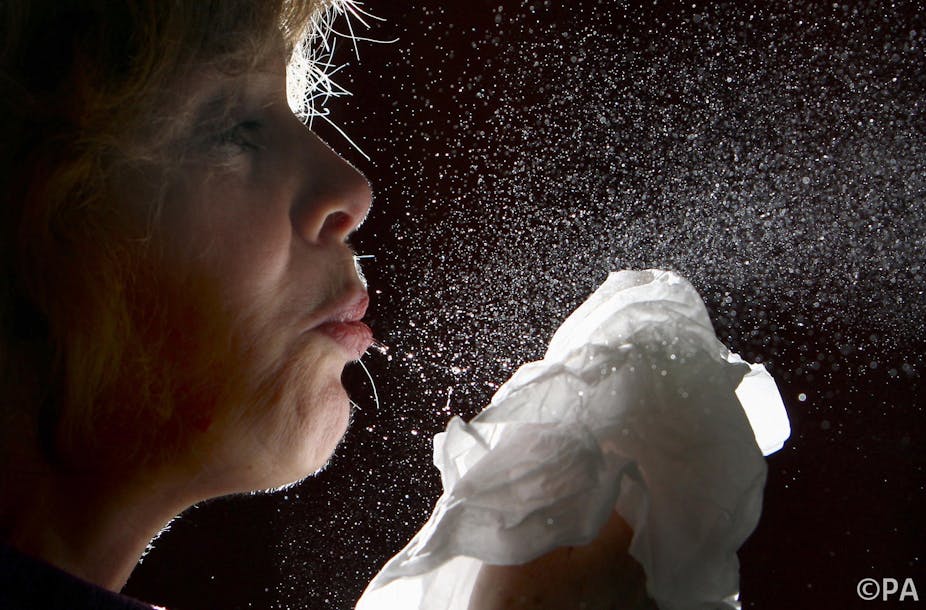After standing in line for the latest year’s flu jab one might wonder why all this in necessary. The answer lies in the flu virus itself and its ability to rapidly evolve and avoid the human immune system. Each year the virus circles the globe, continuously mutating and creating new strains - think seasonal flu as well as avian, swine and all those H-numbered ones - that require new vaccines to protect against.
The influenza vaccine industry is unique because they have to continually produce new vaccines and often within a very short space of time.
Picking the top three
The majority of all influenza vaccines are produced in a similar way. Each summer, scientists examine the current flu strains that are out there and make educated guesses as to which will be the most likely to infect people during the upcoming winter. Typically three strains are chosen each year.
Several different vaccine manufacturers then grow large batches of these viruses which are killed, purified and combined to make the current vaccine. One exception to this process is the production of FluMist, a live-attenuated vaccine. This vaccine also begins with the same strain identification process but the chosen viruses are debilitated so they can’t cause disease in people. This vaccine is then administered as an inhaled mist, as opposed to the standard injection. The mist is easier to administer and may provide better protection, at least in children, but there are restrictions on who can have it. The injected vaccine can be given to most people over the age of six months.
The two different vaccines activate the immune systems in different ways. The proteins on the surface of the virus in the killed (injected) vaccine cause the activation of certain immune cells and the production of antibodies which can be very effective in stopping the virus replicating in your body. But the debilitated (inhaled) vaccine contains a living virus that can infect cells in the respiratory tract. This infection causes the production of antibodies, like the inactivated vaccine, but this time the viral proteins in the infected cells also activate a different set of immune cells called CD8+ T cells, which further help to control the infection.
Towards a universal vaccine
The reason why a new vaccine is necessary each year is that the antibodies generated by vaccination are very specific to the strain of flu used in the vaccine. So when a strain of flu evolves, the antibodies no longer recognise the virus and a new vaccine has to be developed.
The scientific community is considerably focused on developing a so-called universal vaccine, one that would generate antibodies that recognise all influenza strains. Creating a universal vaccine relies on identifying an essential part of the virus that doesn’t mutate from year-to-year and clinical trials are currently underway to test several vaccines created using this approach. It’s a difficult task though as the proteins on the surface of the virus that generate antibody responses are highly prone to mutation.
In contrast, the virus’s internal proteins show fewer mutations from year-to-year, meaning that an antibody or CD8+ T cell that recognises an internal protein from one flu strain may also recognise the internal protein from a different flu strain. Unfortunately, during viral infection or vaccination, the internal viral proteins don’t tend to generate protective antibodies in the way that the viral surface proteins do. Instead, they activate CD8+ T cells that could provide protection against multiple strains of flu.
Immune cells
This phenomenon was recently shown by researchers from Imperial College of London in a report published in Nature Medicine. In an experiment to study why some people seem to resist severe illness, the team took blood samples from volunteers during the swine flu pandemic in 2009. Over the next two flu seasons they found that those who avoided severe illness had more CD8+ T cells, which recognised internal proteins from the pandemic strain and appeared to provide protection despite them never being vaccinated.
The individuals with these cross-reactive T cells were not immune to infection but the severity of the disease was significantly reduced when they became infected. So the researchers argue then that a vaccine that stimulates the body to produce more of these CD8+ T cells could prevent against lots of different flu virus strains.
In another piece of research from the University of Iowa, published in The Journal of Immunology, vaccination with the live-inhaled FluMist vaccine was shown to generate both strain-specific antibodies and cross-reactive CD8+ T cells, albeit producing a lower level of T cells. Further research could find a way to boost the generation of these T cells and enhance the “universality” of the vaccine.
The Imperial and Iowa results suggest that a vaccine that is designed to activate CD8+ T cells could be the way to effectively control all strains of influenza. However, internal flu proteins still show some strain-to-strain variation and the mutation of these proteins, as shown by recent work published in PLOS Pathogens by Dr Katherine Kedzierska at the University of Melbourne, has shown that this can significantly alter the effectiveness of CD8+ T cells.
We may be on our way towards a universal vaccine against influenza but we haven’t yet found a definitive answer. Perhaps by combining different types of vaccinations and technologies it may be possible to generate a one-jab flu vaccine. But until then, the top three strains will continue to be picked each year.

